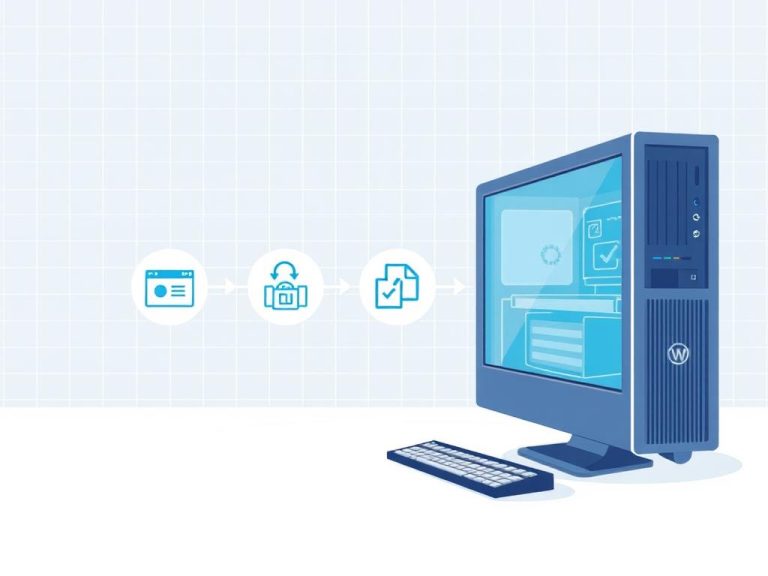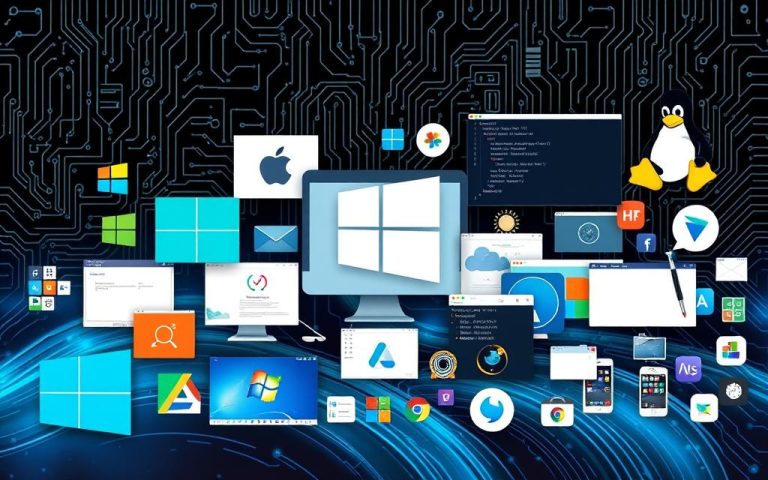Exploring the Different Types of Threats to Computer Systems
Understanding the types of threats to computer systems is vital today. With the rise of technology use in daily operations, system vulnerabilities are often targeted. Malware is a key issue, causing financial loss and operational issues. Moreover, phishing schemes now exploit human psychology, tricking even the careful.
It’s crucial for both individuals and companies to recognise these threats. This knowledge helps create strong security methods. We’ll look at threats like malware, phishing, and social engineering, plus how to protect sensitive information and ensure system safety.
Understanding Cybersecurity Threats
Cybersecurity involves many challenges to keep digital assets safe. It’s vital to know what cybersecurity threats are. These threats come in many shapes, like malware and social engineering. They affect both individuals and groups.
Definition of Cybersecurity Threats
Cybersecurity threats are harmful actions aimed to disturb, damage, or enter computer systems without permission. Cybercriminals use techniques such as malware, phishing, and social engineering. The threats can come from lone hackers or large groups, driven by profit or politics.
Importance of Cybersecurity
In today’s digital era, cybersecurity is more critical than ever. Cyber threats can lead to loss of money and reputation for people and organizations. By 2025, cybercrime might cost the world over $10.5 trillion each year. This shows how vital strong cybersecurity measures are. Keeping data safe and systems secure is key for every business and government.
| Threat Type | Description | Impact |
|---|---|---|
| Malware | Malicious software including viruses, trojans, and ransomware. | Systems disruption, data loss, financial theft. |
| Phishing | Fraudulent attempts to obtain sensitive information via email or malicious websites. | Identity theft, financial fraud, data breaches. |
| Social Engineering | Manipulating individuals into revealing confidential information. | Data compromise, unauthorized access, loss of trust. |
| Denial-of-Service (DoS) | Overwhelming systems with traffic to disrupt availability. | Service outages, loss of revenue, reputational damage. |
What Are the Types of Threats to Computer Systems?
Cybersecurity threats include many harmful activities aimed at damaging computers and stealing data. These threats are mainly malware, social engineering, and injection attacks. They pose risks to both individuals and businesses.
Malware Attacks
Malware means malicious software and covers threats like viruses, spyware, worms, and trojans. They aim to find and attack system weaknesses, leading to data loss or theft.
- Computer viruses copy themselves and spread through downloads or USBs. They can disrupt service and cause big data losses.
- Spyware watches users secretly and steals passwords without being noticed.
- Worms move by themselves, slowing or stopping systems from working well.
- Rootkits hide as important files, making them hard to find. They often steal money info.
- Scareware fools people into buying fake antivirus software with fake warnings.
- Trojan threats look safe but can harm your system and steal data once they’re in.
Social Engineering Attacks
Social engineering uses tricks instead of technology weaknesses. It aims to get secret info from people.
Phishing is a common type, with fake emails or messages that steal data. These can cause big data leaks and money loss.
Injection Attacks
Injection attacks, like SQL injection, attack web programs by putting harmful code into them. This lets hackers control databases and steal lots of data.
| Type of Threat | Description | Common Consequences |
|---|---|---|
| Malware | Malicious software that harms computers | Data loss, system failure |
| Social Engineering | Tricks to make people give away secrets | Data breaches, financial loss |
| Injection Attacks | Harmful code in applications | Stolen data, damaged systems |
The Impact of Phishing and Insider Threats
Nowadays, companies depend more on digital systems. This makes them vulnerable to phishing and insider risks. It’s vital to know about these dangers to protect against cyber attacks. Both can cause big data leaks, hurt business operations, and lose customer trust. Fighting these threats is key to keep important info safe.
Phishing Threats
Phishing is a big issue in cyber safety. Scammers try to get private info by pretending to be trustworthy, like pretending to be banks or colleagues. They often use emails, social media, to trick people. About 80% of cyber incidents are because of phishing, showing how common it is.
Insider Threats
Insider threats also pose a big risk, leading to huge losses and damage to reputation. Research by the Ponemon Institute shows such attacks cost around £11.45 million on average. Insider threats can be:
- Intentional insider threats: Employees harm their company on purpose.
- Unintentional insider threats: Mistakes or carelessness cause harm without mean intentions.
- Malicious insider threats: Workers harm for personal benefit or revenge, posing serious risks.
- Collusive threats: Insiders work with outsiders against their company.
Negligence by employees makes up 63% of insider risks. This shows training on safety rules is crucial. People behind these may be pawns, turncloaks, collaborators, goofs, and lone wolves. They each bring different security challenges.

Signs of insider threats include secret entry points, changes to safety setups, and unapproved access tries. Harmful insiders have caused leaks of over a billion records. So, spotting and acting on suspicious behaviors quickly is essential to prevent these leaks.
Preventative Measures Against Cyber Threats
In today’s world, keeping safe online is crucial for both companies and individuals. Malware, phishing, and other dangers are everywhere. That’s why having a plan with good security rules and teaching people about these threats is key.
Implementing Strong Security Protocols
Putting in place strong security measures can greatly lower the chance of cyber attacks. Here’s what is recommended:
- Installing a reliable firewall to monitor and control network traffic.
- Regularly updating software to patch vulnerabilities and protect against zero-day exploits.
- Utilising strong authentication methods such as multi-factor authentication (MFA) for added security.
- Encrypting sensitive data to safeguard it against unauthorised access.
- Maintaining up-to-date antivirus software from reputable providers like Webroot.
Using these measures helps protect against hacks. It’s also good to be careful with free downloads and emails from strangers. This helps lower your risk online.
Public Awareness and Training
Teaching people about cybersecurity is crucial in fighting cyber threats. Training workers to spot phishing and be careful online is essential. This might include:
- Workshops on identifying suspicious emails and links.
- Regular updates about current cyber threat trends and techniques used by hackers.
- Simulated phishing exercises to test employee readiness.
Creating a culture that values security is vital. Using resources like tips on protecting against cyber threats can help everyone stay safer. By focusing on teaching about cybersecurity, firms can greatly cut down on risks.
Conclusion
Cybersecurity is complex and covers many threats that can attack computer systems. These range from natural disasters and mistakes by people to digital dangers like viruses and scam emails. It’s crucial for everyone to learn about cybersecurity. This knowledge helps people spot dangers and take steps to protect against them.
Security is super important. We need to take steps like updating systems, using strong passwords, and educating ourselves to fight off threats. The rise in ransomware shows how vital it is to protect our systems. Also, as sneaky threats and insider dangers grow, staying alert and knowledgeable is a must for all users.
By focusing on cybersecurity and adopting strict security habits, we can better protect our systems and private info from hackers. Keeping our digital spaces safe is essential. It’s something we must do as we move into a world that’s more and more connected.
FAQ
What are cybersecurity threats?
Cybersecurity threats are harmful attempts to access or harm computer systems and networks. They aim at data theft, service disruption, or causing damage. Often, they’re carried out for money, to cause trouble, or for political reasons.
What types of malware are common in cyber threats?
Viruses, worms, trojans, and ransomware are among the common malware types. They exploit weaknesses in systems. This can lead to data loss or complete shutdowns of systems.
How does phishing work as a cyber threat?
Phishing tricks people into giving away sensitive info by mimicking trusted contacts. It’s mainly through emails or messages. Sadly, around 80% of cyber incidents start with phishing.
What is social engineering in the context of cyber threats?
Social engineering uses tricks to make people share confidential details. It’s not just about hacking skills, but exploiting trust and human nature. Tactics like phishing are common examples.
What preventative measures can organisations implement against cyber threats?
Companies can boost their defences with firewalls and encryption. Keeping software up-to-date and using strong passwords are key. Also, teaching employees about cybersecurity risks is very important.
What is the significance of cybersecurity awareness?
Knowing about cybersecurity is critical for spotting dangers and understanding their effects. It helps both people and businesses stay ahead, safeguarding their information better.














